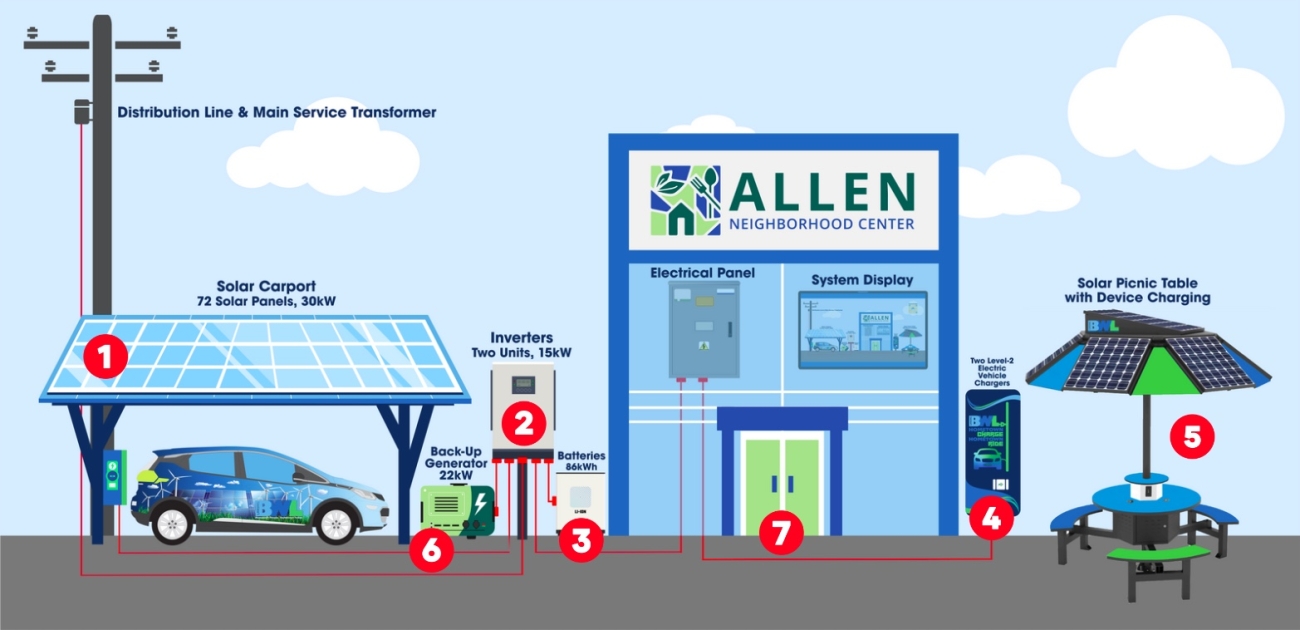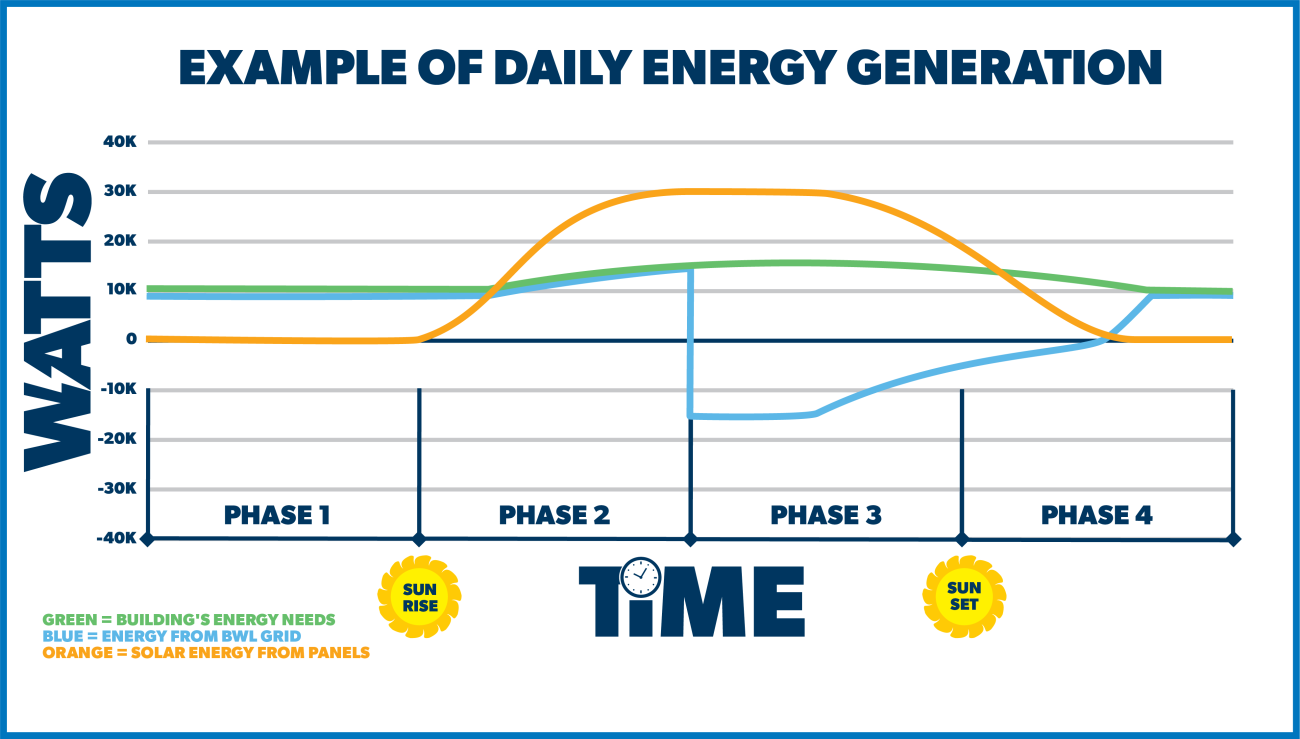BWL has partnered with the Allen Neighborhood Center (ANC), launching Lansing's first energy demonstration project. ANC is now powered mainly by its own resources, using sunlight for energy during the day and stored energy from batteries at night. The site showcases various technologies for the public to experience and interact with such as solar panels, inverters, storage batteries, solar-powered picnic tables and electric vehicle charging stations, plus live data for each device.
Why?
The BWL is committed to promoting clean energy and sustainable practices in our community. As new technology becomes available, it’s important to understand the benefits of electrification systems. The energy demonstration at Allen Neighborhood Center allows customers to learn about and engage with these new systems that will become more common in the future.

The approximate 30kW system is comprised of 72 solar panels installed on a carport over parking spaces. The panels face south maximizing sunlight hours.
Feeding out from the panels, underground wires move generated power to inverters that make it usable. This energy is then either consumed directly at the center, sent to batteries on site for later use, or sold back to the grid when the batteries are full. The data shared on the adjacent educational screen at ANC is gathered by these inverters.
From the inverters, the power may be redirected to the batteries to store excess power. These batteries continue to store this electricity and begin to discharge when the sun goes down and the panel’s production is outpaced by the demand of the building.
Two Level 2 chargers provide free charging to promote community awareness of the benefits of electric vehicles. Four cars can charge at once with each receiving up to 3.5kW each.
Solar powered picnic tables were also installed at the corner of E. Kalamazoo St. and Shepherd St. These tables provide shade, lighting and charging to any pedestrians in the area.
In case of utility power loss, the generator, batteries and solar will work together to maintain power to the building.
The system is powering a portion of the ANC building including the offices, kitchen and EV chargers. The energy demand of the building service drove the design and size of the solar and battery components.
How Does the Solar Array Work?

The sun’s energy is collected by the solar panels, then travels directly to two 15 kW inverters through underground cables. These inverters control the power management and seamlessly balance the flow of energy from the different power sources (solar, battery, grid or generator). They are programmed with the following logic:
Phase 1: If solar or battery aren’t available, the grid supplies the power needs.
Phase 2: Solar-generated power will travel through the inverters and into the batteries until they are fully charged, which typically takes a few hours after the sun rises and is the most efficient way to transmit and store this energy.
Phase 3: Once the batteries are charged, the solar power will then cover the needs of the building, allowing it to run completely on solar energy.
Phase 4: Provided that the array is generating more power than the building needs to consume, all the excess power will be sold back to the grid for a credit on ANC’s utility bill. When the sun goes down, the building runs off its batteries until the batteries are depleted and then the power from the utility grid is used. When the sun rises the cycle repeats.
As a backup, provided a power emergency was to occur, ANC would first rely on solar, and then its charged batteries. If these systems are unavailable, a natural gas generator is integrated into the system.
Expected Outcomes
Allen Neighborhood Center’s new solar array is currently up and running, saving them on energy consumption and costs daily. Based on the current system, it’s estimated ANC will save approximately 49,000 kWh of energy per year (an average residential customer uses 6,500 kWh annually).
